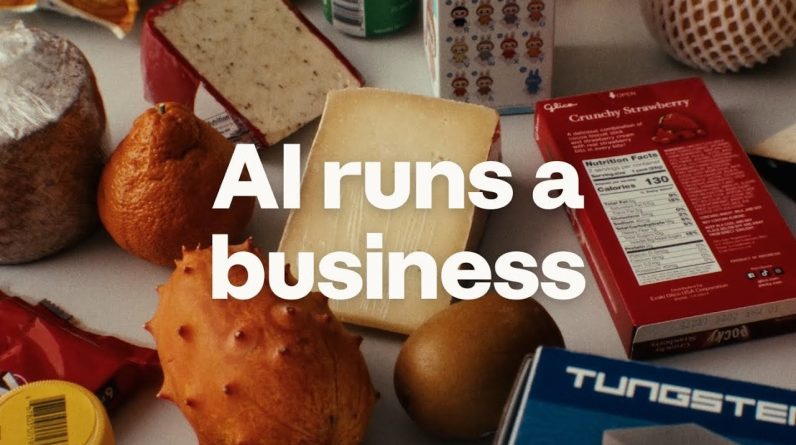WPP describes itself as ‘The Creative Transformation Company’ – and is one of the largest marketing organizations in the world. Some of its clients include the likes of The Coca-Cola Company, Google, and Ford, where key to its success has been creating innovative, creative and thoughtful content marketing. But what does success look like in a world where generative AI reduces the cost of creating content drastically? And how does an organization that prides itself on value added content continue to deliver value to those world leading brands, when generative AI claims that models can do all the work for you, at a cost of next to nothing?
Speaking at a Google Cloud event in London this week, WPP CTO Stephan Pretorius said that the company has had to go through a period of self reflection, asking itself these exact questions. WPP has been going through a cloud transformation journey, using Google Cloud, upon which it has also built some of its core workflow and creative platforms.
To the amusement of many of the journalists in the room speaking with Pretorius, he began the session by turning the question back on the media. He said:
Let’s make this a little bit interesting. So let’s start with a thought experiment, where I’m going to put myself in your shoes. Given everything you’ve heard about generative AI, the question you should be asking yourself as journalists is: why are you even here?
If you could take a recording of the session, do a voice to text translation using AI, and then prompt a large language model to say ‘write an article about Google that highlights XYZ’, it would give you a result, it would give you a result today.
And so the fundamental question you should ask yourself is: why are you here? And what is your role in the ecosystem and the economy, given generative AI?
It’s a very fair question and one that media organizations around the world are currently asking themselves (including diginomica). Pretorius added:
That is exactly the thought experiment that we went through a year ago. Even though we’ve been on our AI and cloud transformation journey with Google for many years, when ChatGPT blew up and everyone started becoming aware of the opportunities of AI, and everyone started seeing the potential of machines creating content, that is exactly what the experiment we went through WPP.
A framework for generative AI
WPP currently employs 115,000 people world-wide, where its army of staff do everything from write press releases, to branding and marketing strategy, to coming up with ideas for the Super Bowl brand campaigns, to producing and distributing content through all types of media channels across the world. It covers the entire lifecycle of using content and channels to connect with consumers, and so WPP has had to seriously consider how generative AI will impact its business model.
The company did a lot of consulting internally, according to Pretorius, where it sought people’s opinions on how they see generative AI playing out and how they have already been adopting it organically.
Having been through this process, WPP has created a framework for generative AI that focuses on three core use cases: inspiration, automation and optimization.
First up, ‘inspiration’ considers how generative AI can be used to come up with new ideas, particularly in terms of how it can be utilized to brainstorm and query data to come up with new creative concepts. Pretorius said:
Even going from an idea, to a representation of that idea as an image or mood board, or brainstorming in a very quick way…inspiration is all about augmented creativity. It’s about making humans faster, more creative, expanding our horizons, making you work faster. It’s not about replacing humans, it’s about augmenting them.
However, Pretorius was also keen to add that it’s “critical” to note that he has not yet seen a world where machines are creating breakthrough new ideas. He said:
Machines can optimize within mechanical systems. What it can’t do is come up with an all new human insight, behavioral insight or cultural insight that the best marketing is really founded on.
We see generative AI as a super important tool that’s going to be fundamental in changing the way that we work across all aspects of our business. But we fundamentally do not see this as machines replacing humans, we see this as augmenting humans.
The second use case is ‘automation’, which is perhaps where WPP will see significant time and cost savings. Currently, how WPP works with clients is that when they submit a brief for a campaign to the organization, it gets loaded into WPP’s OS (which is built on Google Cloud), and then someone will have to go and pull historical information about past campaigns, past performance, any documents that are relevant, and collate any relevant research.
This process typically takes three to four days and is quite labor intensive. And this is where generative AI can play a significant role. Pretorius explained:
Normally we would put it on a big shared miro board because a lot of people are working remotely and then we have a brainstorming session. Now, an entire three four days worth of work is completely automated using generative AI. So as soon as the brief is submitted, the AI finds all the information, chooses the right templates in the miro board for the client project and creates it for the brainstorming session.
Sounds really mundane, but that was someone’s job, right? And it didn’t really add a lot of value because it was just really tedious.
The final use case is ‘optimization’, which Pretorius said is not actually generative AI and uses a whole different strand of mathematics, but is closely linked to WPP’s strategy on the technology. This use case is focused on outcomes. He explained:
So you invest $100 and you want more than a $150 return, you want a $180 return. The whole idea of content performance, what makes consumers respond to content, is actually a computer science problem at its heart. You can reduce any kind of content to features and attributes, which you can code and say: what happens in this three minute video and map those features against the results that you track in the market?
Ultimately, instead of having to go through the site to manually rinse and repeat this every time, you train the machine with the results to say: ‘we know what makes good content so we can make better content the next time around’.
Skills
Following Pretorius’ discussion about how WPP has thought through generative AI, I put it to him that one of my key concerns is not employees with years of experience and networks, but rather younger people entering the workforce for the first time. This is because, I believe, prior to AI and automation technology, younger employees gained skills, knowledge and relationships often because tasks and processes took time to carry out. Many of us have had the luxury of things taking time to produce, which lends itself to having time to learn. What does this mean for young people in the workforce where a lot of those same processes and tasks can be either automated away or where generative AI can instantly create the content for you? If a huge chunk of tasks no longer take time, how do younger employees get the time to learn?
Pretorius had three key thoughts on this. The first being that apprenticeship-style workforce environments are important. He said:
I think like a lot of industries, ours is very much an apprenticeship culture. People learn from seniors, they’re coming into the business as juniors and then learning their skill and their craft. We kicked off a Creative Marketing Apprenticeship Programme to fast track that issue specifically.
But his second point was that we shouldn’t underestimate the younger workforce and the skills that they are bringing to the workplace already. Pretorius added:
What I’m gonna say to you is, the skills that they’re coming into the job market with now are fundamentally different from what people entered with 10 years ago. And so I don’t think the learning paths are going to be the same, right?
You’re not going to go through exactly the same learning path and learn the same fundamentals with the same tools. They’re coming into the workplace with advanced technology. I’m blown away by how naturally at ease these 20/21 year old kids are with really sophisticated technologies, And that’s where they are starting from. So I think it’s wrong to think about career paths being entirely linear and having to be replicated.
But finally, Pretorius did note that soft skills are going to be hugely important in a world where AI is carrying out a lot of the grunt work for us. He finished by saying:
But at the same time, I do think there’s this notion of learning the soft skills of your craft – learning how to read a room, build relationships, earning someone’s trust, those kinds of things. Those are fundamental, and those won’t change.
And frankly that’s why I’m so optimistic about humans plus machines, not humans replacing machines, because I think those essential human attributes and skills will always be there. And in fact, probably will become more important over time.








